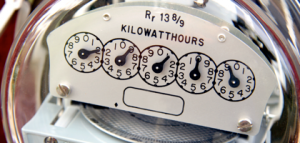The California Community Colleges (CCC), and Investor-Owned Utility (IOU) Energy Efficiency Partnership is a unique, statewide energy efficiency program achieving cost-effective immediate and persistent peak energy and demand savings. Moreover, it establishes a permanent framework for a sustainable, long-term, comprehensive energy management program at the one hundred and twelve (112) campuses served by California’s four large IOUs (PG&E, SDG&E, SCE and SoCalGas).
Established in the 2006-08 CPUC Energy Efficiency Program Cycle, the CCC/IOU Partnership set ambitious goals of saving 19,000 kW, 84 million kilowatt-hours, and 2.5 million therms of gas by the end of the cycle. To achieve these goals, the Partnership is committing $22 million in incentive funds to Community College Districts to assist in the accomplishment of energy partners.
The program employs four key strategies to meet its goals: energy efficiency retrofits, monitoring based commissioning (MBCx), energy efficient new construction, and training and education. This multifaceted approach delivers comprehensive savings, and contributes to California’s national leadership in energy efficiency and reducing climate change.
The Partnership capitalizes on the vast resources and expertise of the California Community Colleges and California’s IOUs with program administration assistance from Newcomb Anderson McCormick of San Francisco. It is funded by California’s investor owned utility customers through Public Goods Charges (PGC) under the auspices of the California Public Utilities Commission.
UC/CSU/IOU ENERGY EFFICIENCY PARTNERSHIP
The University of California (UC), California State University (CSU), and Investor-Owned Utility (IOU) Energy Efficiency Partnership is a unique, statewide energy efficiency program achieving cost-effective immediate and persistent peak energy and demand savings. Moreover, it establishes a permanent framework for a sustainable, long-term, comprehensive energy management program at the thirty three (33) UC and CSU campuses served by California’s four large IOUs (PG&E, SDG&E, SCE and SoCalGas).
Established in 2004-05, the UC/CSU/IOU Partnership significantly exceeded its goals, saving approximately 32 million kilowatt-hours and 1.5 million therms of gas. Peak demand savings were also targeted and achieved. As a result of this success, the program was renewed for 2006-08, and again for the 2009-2012 program cycle. Funding levels for the renewed program more than doubled on an annual basis, and energy savings goals increased approximately four-fold.
The program employs four key strategies to meet its goals: energy efficiency retrofits, monitoring based commissioning (MBCx), emerging technology demonstrations, and training and education. This multifaceted approach delivers comprehensive savings, fulfills key elements in UC and CSU sustainability policies, and contributes to California’s national leadership in energy efficiency and climate change.
The Partnership capitalizes on the vast resources and expertise of the University of California, California State University, and California’s IOUs with program administration assistance from Newcomb Anderson McCormick of San Francisco. It is funded by California’s investor owned utility customers through Public Goods Charges (PGC) under the auspices of the California Public Utilities Commission.
 From an article written by Peter Rumsey, PE Guest Author for Rocky Mountain Institute Outlet.
From an article written by Peter Rumsey, PE Guest Author for Rocky Mountain Institute Outlet.

